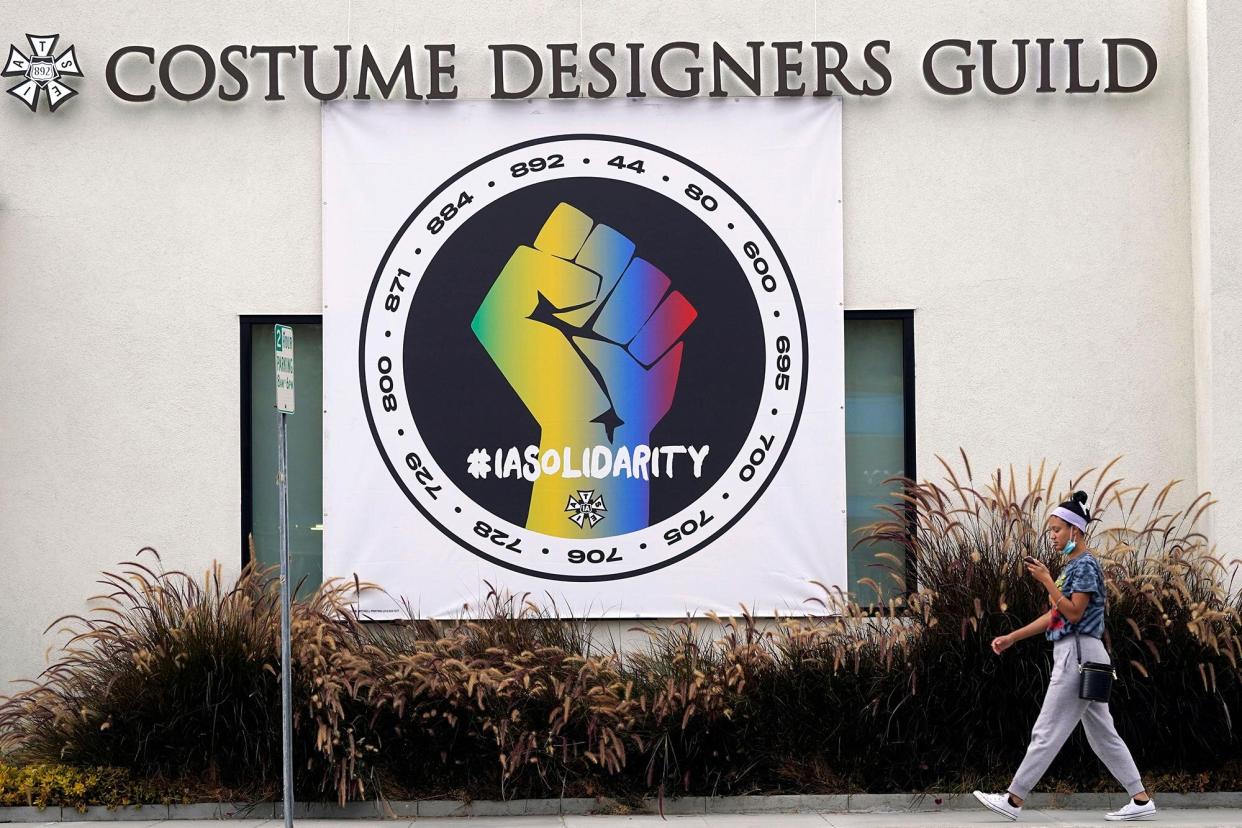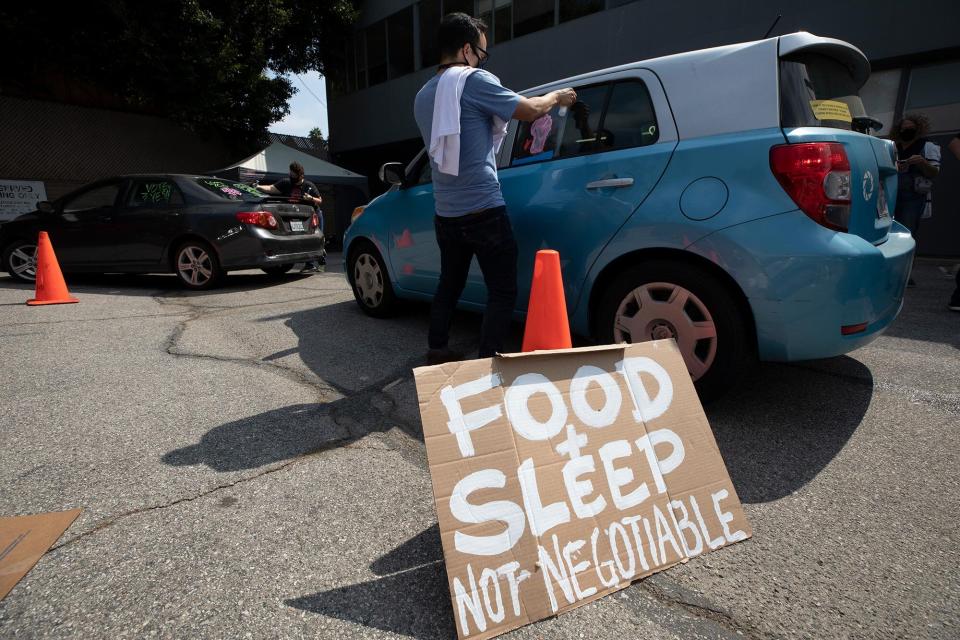Hollywood crews reach new deal with studios, narrowly avoiding a nationwide strike

Chris Pizzello/Invision/AP/Shutterstock A poster advocating union solidarity hangs in front of a Costume Designers Guild office building in Burbank, Calif.
Hollywood narrowly avoided a near-total shutdown as the union representing most of the industry's crew members reached a tentative agreement for a new three-year contract with the major studios late on Saturday. About 60,000 crew members had been poised to strike if a deal was not reached, which would have brought nearly all film and television production to a halt nationwide.
Members of the International Alliance of Theatrical Stage Employees, one of Hollywood's largest labor unions, had previously voted to authorize a strike by an overwhelming margin, amid tense contract discussions with the Alliance of Motion Picture and Television Producers, which represents the studios. IATSE members have been pushing to improve working conditions that have persisted in the entertainment industry for decades, particularly the grueling hours required on film and TV shoots.
The union's negotiators agreed to a deal after winning concessions on several key terms, including a minimum 10-hour rest period between on-set shifts for all workers, and a 54-hour break on weekends. The proposed new contract also includes increased meal penalties (intended to coerce productions to include lunch breaks), wage increases, and improved wages and working conditions for streaming projects. The contract will still need to be ratified by IATSE members.
"This is a Hollywood ending. Our members stood firm. They're tough and united," IATSE president Matthew Loeb said in a statement provided to EW. "We went toe to toe with some of the richest and most powerful entertainment and tech companies in the world, and we have now reached an agreement with the AMPTP that meets our members' needs."

Myung J. Chun / Los Angeles Times via Getty Images Union members get pro-labor slogans painted on their cars during a rally at the Motion Pictures Editors Guild IATSE Local 700
A spokesperson for the AMPTP confirmed that a tentative agreement had been reached but did not comment further.
This deal comes after months of negotiations and years of discontent over working conditions in the entertainment industry. A "normal" workday for a Hollywood shoot is typically 12 hours, but crew members say they can often stretch much longer, sometimes requiring them to work as much as 20 hours straight without a substantial break.
Previous flashpoints for these conditions — including the 1997 death of camera operator Brent Hershman, who fell asleep at the wheel while driving home from a 19-hour workday — provoked discussion but little actual change. This time, a remarkable show of unity from crew members may have helped them gain ground in negotiations. On Instagram, many workers have shared stories of exhaustion, burnout, and even near-death experiences using the page IATSE Stories, which has amassed more than 1,000 posts since August.
"We're not machines," camera operator Hassan Abdul-Wahid previously told EW. "You don't get to wear us out and replace us. These are actual people who care about what they're trying to do, who want to be in Hollywood making movies and TV shows. To use that against us is ridiculous."
Now, crew members are poised to potentially see the substantive change they have hoped for for decades.
"Solidarity is more than a word," IATSE president Loeb said. "It's the way to get things done."
Related content:

